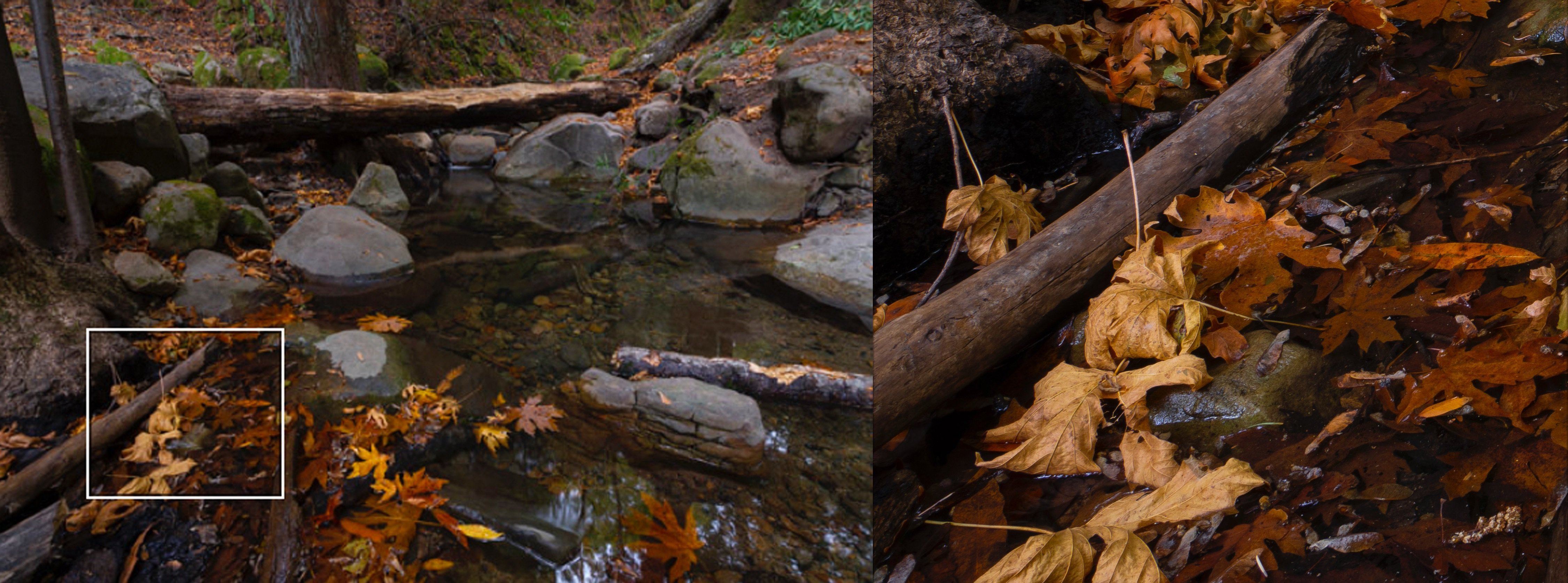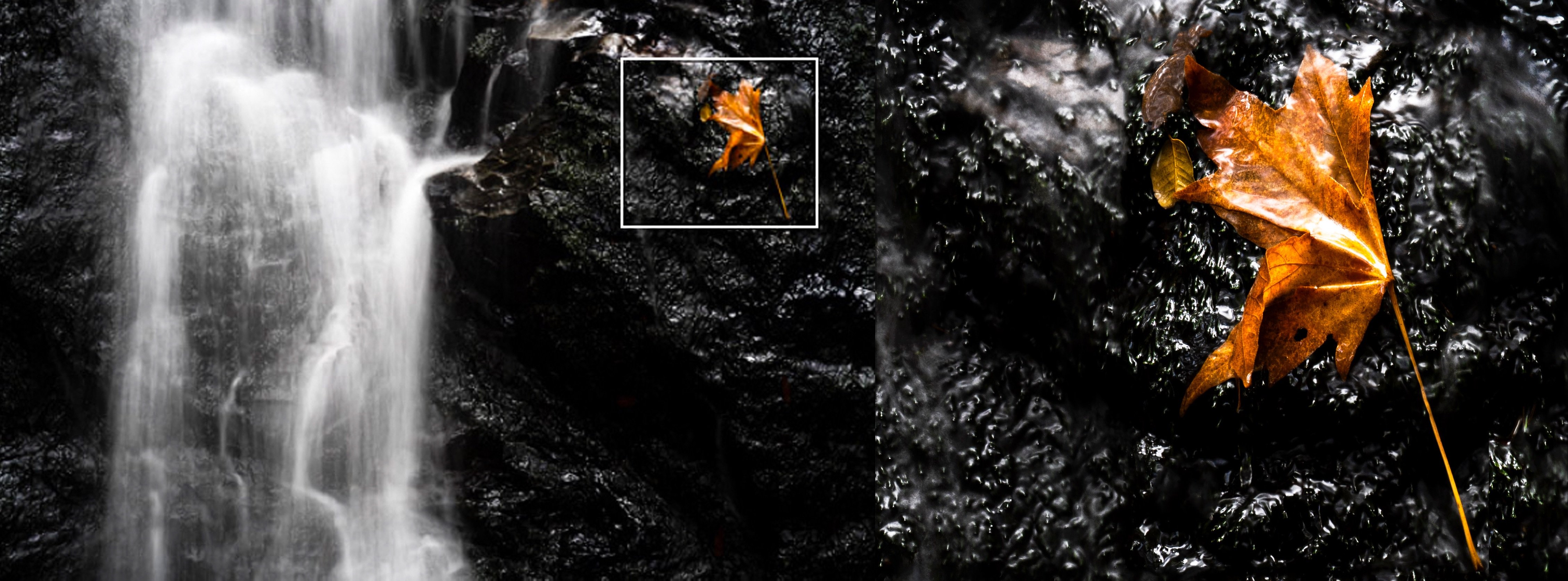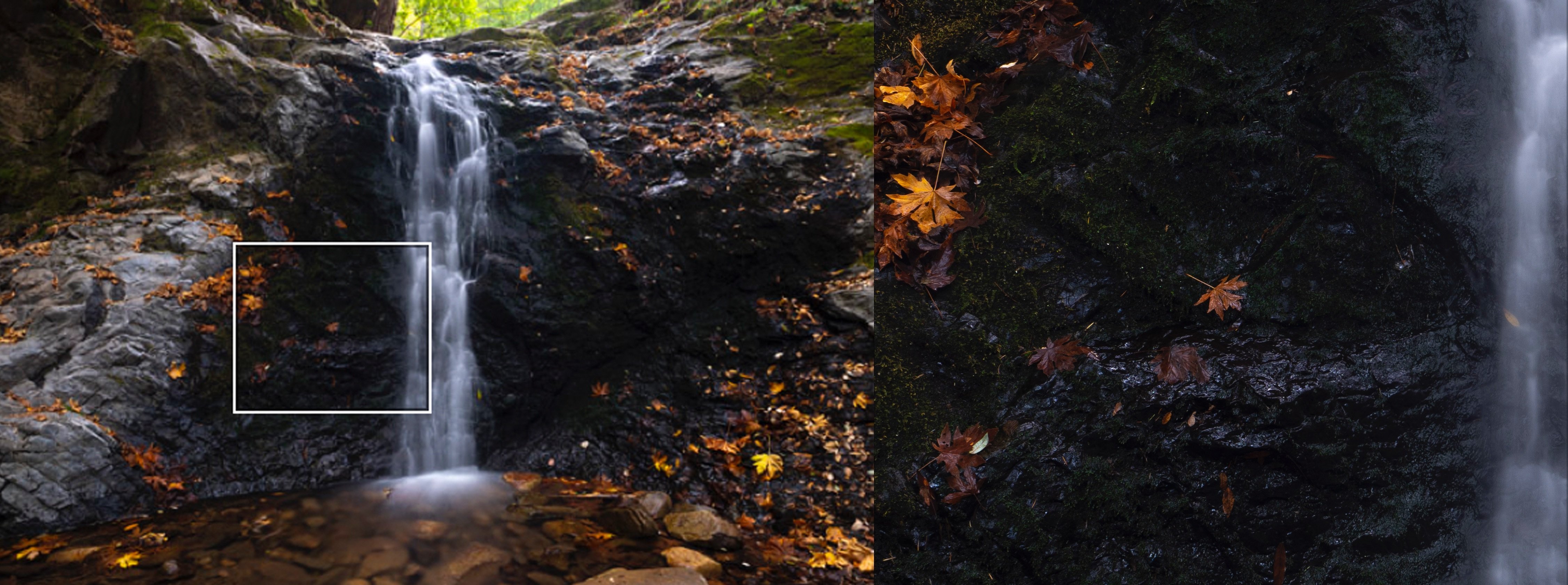Sony a7R IV Field Test: A Landscape Photographer’s Dream
Two weeks ago I unboxed the Sony a7R Mark IV mirrorless camera, the high resolution beast, and brought it with me for a field review in the mountains around Santa Clara in Northern California.
You can find the unboxing video on my YouTube channel and the first impressions here. In the box you will find the camera, a nice strap that will immediately broadcast around that you are a proud owner of the Sony flagship, one battery, charger, cables and a bunch of manuals that I never open:
Handling
For my first trip, I coupled the camera with a brand new Sony FE 70-200mm f/2.8 GM OSS and my trusty Sony 16-35mm f/2.8 ZA in A-mount, which I’ve been using for almost five years now.
Knowing this lens inside-out for so long put me in a great position to evaluate the differences between my old Sony A99 II and the new a7R IV, both in terms of image quality and, very importantly, in terms of handling the camera in the field while producing actual images, with all the environmental issues that may arise from being precariously balanced in the middle of a stream.
I always get soaked when I work. No exception.
I’ve been an Alpha mount photographer for more than 10 years. I started with the Sony A200, a little gem that still holds a special place in my heart. I went through the A900, then the A99, followed by the A99 II. I love big cameras with the DSLR form factor.
My first impressions of the a7R IV are much better than my impressions when I first (and last) used the a7R III in China: the button layout has improved and the overall feel of the camera—at least for someone like me who used to big cameras—is much better and more straightforward. The new joystick feels great and is very easy to use to select focus points, while the addition of a touch display that you can also use to select focus is very much welcomed.
The top controls are on the right side of the camera. Three control dials, C1 and C2 programmable buttons and the On/Off toggle switch. The Mode dial can be locked. The EV dial can also be locked. Not that I mind too much, but others might welcome the addition.
Overall, I didn’t have any big issue while shooting and I found myself at home from the beginning, which is extremely important when shooting outdoors in an unpredictable setting.
Last year I end up not buying the a7R III after testing it, mainly because of how the camera felt while using it. Today, I see myself sticking to the a7R IV. Bravo Sony, you got me this time.
The laundry list of key features include:
- 61 megapixel full-frame Exmor R CMOS sensor
- 15 stops of dynamic range
- 10fps continuous shooting (with 7 seconds buffer)
- Pixel Shift Multi Shooting mode
- 5-axis in-body image-stabilization
- Electronic shutter for silent shooting
![]()
Autofocus
Being a landscape photographer, snappy AF is not very important for my type of shooting. Mountains and dunes tend not to move too fast, giving me plenty of time to manual focus. If you are into action photography, though, the AF seems to be amazing, especially with a native lens like the 70-200GM.
Sony did a fantastic job with the new tracking algorithm: once the camera locks focus on an object, it follows it everywhere, even while panning. I also had the chance to test Left/Right Eye focus and it works as expected—definitely better than with my old A99 II. This is as far as my experience with the a7R IV’s autofocus goes, and more in depth testing would be needed to further explore the AF capabilities of the camera.
A-Mount Adapter
The camera can shoot silently, but only with native lenses. The LAEA4 adapter always makes a clicking noise when the shutter is engaged. The LAEA4 adapter is also terribly expensive.
Speaking of the LAEA4 adapter, it comes with few limitations:
To begin with, the focus area is much smaller and prevents the camera from using the on-sensor phase detection focus points, which is a step back from the same A-mount lenses used on the A99 II where the on-sensor phase detection focus points can be used during tracking.
The autofocus is also slower, both compared to using FE lenses natively and to the same lens on the A99.
Lastly, adding a translucent mirror means that the camera loses about 1/3 of a stop of light.
All of this made using the Sony 16-35ZA in autofocus in the field basically useless for me: I switched to manual focus, which is made incredibly easy by the a7R IV. Will I miss auto focus with my old lenses? Yes. But it’s not the end of the world and I will eventually complete my lens lineup with a bunch of super high-quality native lenses (like the outstanding Sony 24mm f/1.4), which is the main reason why I switched to the Sony mirrorless system in the first place.
One more limitation of the adapter is that Eye-AF is disabled. That’s big if you are a portrait photographer who is switching from A-mount.
If you are planning to switch from the A-mount system, you will be able to use your old lenses, but be aware that you will likely have to plan on buying into the native lens system if you want to make the most of this camera. Luckily, the new Sony GM lenses are amazing, with gems like the 70-200GM, 85GM, 135GM and 24GM.
![]()
Miscellaneous
The battery life is great. I could shoot for few hours in the field and only use a very small portion of the battery—I can see myself easily shooting for an entire day without switching battery with my personal shooting style.
Unlike the Sony a9, the viewfinder blacks out shortly after every exposure. A beautiful, bright, fast, very high resolution viewfinder. A joy to look into.
The menu system is typical Sony: not brilliant, but I’m used to it and I welcome the addition of a speed menu page a compared to the menu system on the A99 II. The usual Sony (horrible) connectivity options are there: WiFi, USB, FTP, Bluetooth and NFC. A plethora of options, none of which is remotely easy and straightforward to use.
The iPhone app is a bit of a joke as well: I do not understand why it is so hard to connect the camera to the phone via Bluetooth, negotiate a WiFi connection, and send over the images. I have to spend 5 minutes to set everything up every single time I want to send a photo from the camera to the phone.
It’s almost 2020. We can do better than this. Sony must do better than this.
![]()
Tethering the camera to Lightroom is also cumbersome per tradition: you need to download Sony Imaging software for remote shooting, connect the camera via a USB cable or wireless, set up a folder to auto-import RAW files from Lightroom, close your eyes, and pray that everything works together. It usually does. But remember to enable the PC Remote option, which is not in the USB menu (surpise!), but in the Network menu.
Why, Sony… WHY?!
Once tethering is set up, it works very smoothly: a RAW file is transferred via USB-C to the laptop in about a second, while it takes about 30s to transfer via WiFi. The camera can be fully controlled via the laptop, which is extremely convenient. Tethered wireless shooting, while slower at transferring, can be very convenient for studio work. The faster transfer speed of the USB-C connection as compared to the options on the A99 II is very welcomed.
One more note about the camera software: connecting the a7R IV to acquire GPS coordinates from the phone is a pain and drains a lot of battery, avoid it all costs. I gave up on it.
I’m done with the negatives, there’s nothing else I can think of, aside from the non-tiltable screen at the back. I will miss the A99 II here. And I will scratch the screen for sure.
From here on it is only pure image quality joy.
Image Quality
I’m speechless. This 100% crop comes from the 16-35ZA unprocessed and unsharpened, straight out of the Lightroom raw processor.

There is so much detail here that I don’t know where to begin to sing the praises of this sensor. If the a7R III’s 42MP sensor could sing, the new 61MP sensor can sing, play violin and direct a full orchestra at the same time. According to the noise charts you can find online, the 61MP sensor has slightly more noise than the older 42MP, but I am hard-pressed to find any hint of noise anywhere, not in the shadows and not in the shadows when lifted. Anywhere.
The colors are beautiful, poppy, life-like, easy to manipulate. I pushed post-processing hard in a couple of the images I took last weekend and I could not break the file.

This 100% crop comes from the 70-200GM, again, unsharpened. You can see every little nerve in the leaf and the dynamic range is wide and forgiving. It will be very hard to blow out highlights with this sensor and completely miss an exposure.
Even in the areas of the leaf that are slightly overexposed, the color details are still all there ready to be recovered. Beautiful. To add to the symphony, the 70-200GM can easily resolve all the pixels in the sensor.

In this image, the fall colors of the leaves are beautifully rendered, while the huge dynamic range gives no problems retaining the details in the background, which, in this kind of shots, has always been a tough issue to manage without a graduated neutral density filter (that comes with its own issues).
I didn’t use a filter in this image and I didn’t need to do a double exposures to blend together. It’s one shot that the camera handled masterfully. The transitions from shadows to mid-tones and from mid-tones to highlights are smooth as silk thanks to the 14-bit processing engine.
I’m now very intrigued by the possibilities of Pixel Shift, which I plan to use in more static scenes when I’m used to the camera and can start to experiment further with its capabilities. I plan to shoot a stitching panorama with Pixel Shift and watch my 2019 MacBook Pro cry in protest as it attempts to process the resulting file.
The absence of an antialiasing filter completes the formula for what I believe to be the best full-frame sensor currently available on the market.
Conclusion
This is a landscape photographer’s dream camera.
Does it beat a medium format sensor in image quality? Maybe not. But it also only costs $3,500, is very easy to carry around, and boasts a system of wonderful native lenses that Sony is expanding at a breakneck pace, releasing one GM lens after the other.
![]()
Last year I asked myself if I was ready to switch to mirrorless, and my answer was no. This year I asked myself the same question, but I bought the camera before I could even think of the answer.
And I’m not disappointed.
On the contrary, I’m delighted. The a7R IV is easy to use, it’s fast, it’s fun, incredibly powerful, with image quality that will make you want to print billboards with your images and slap them all over the highway. The menu system and software could be better, but who cares with this image quality.
Now, where’s my 24mm f/1.4?
My bank account is already crying…
About the author: Francesco Carucci is a Landscape and Travel Fine Art photographer based in the Bay Area. You can find more of his work on his website, or by following his adventures on YouTube, Instagram, and Facebook. This post was also published here.